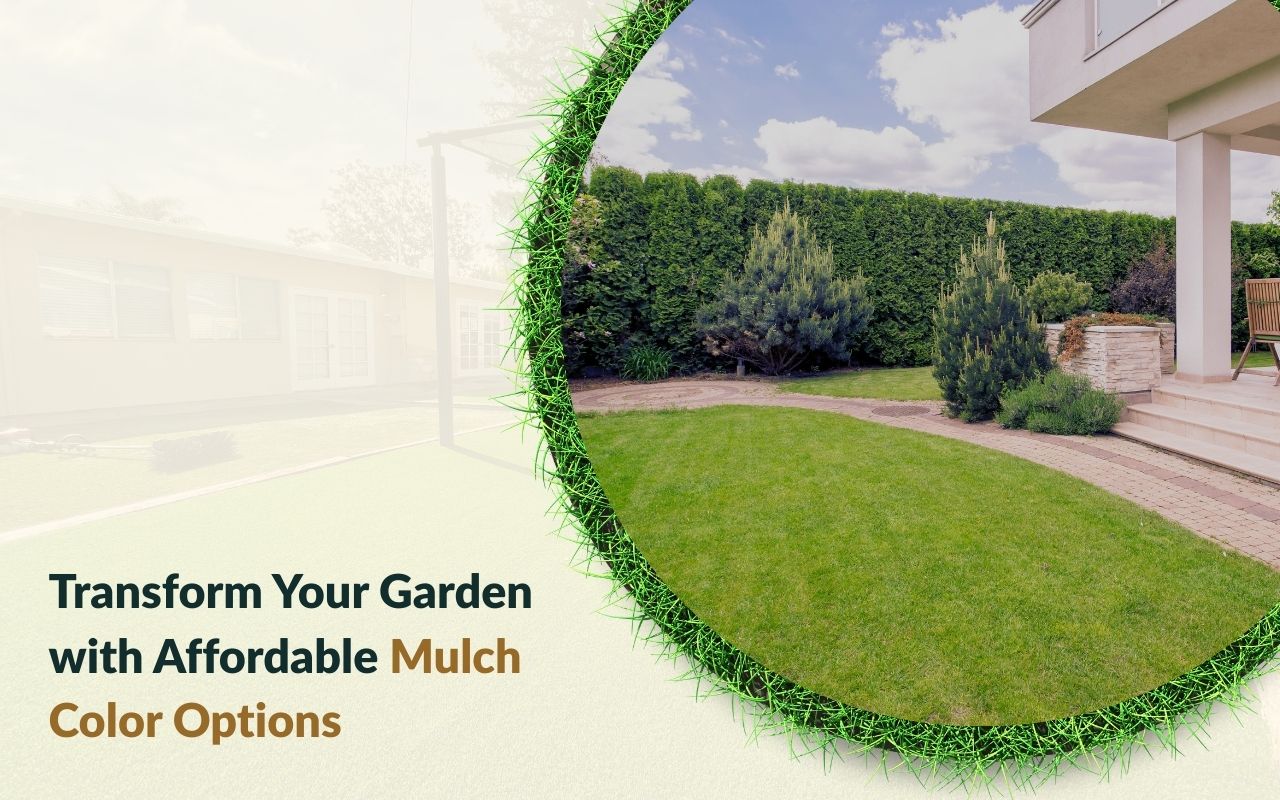
If you’ve ever dreamed of having a vibrant, lush garden without spending too much, you’re not alone. Many gardeners struggle to balance beauty and practicality.
Enter mulch color options—a simple, transformative solution that can refresh your outdoor space while keeping maintenance costs low.
By choosing the right hues, you can highlight plants, create visual harmony, and even influence soil temperature with minimal effort.
Imagine walking into your garden greeted by a tapestry of colors, each shade carefully selected to complement your flowers and foliage. From rich browns to elegant blacks, mulch color options provide a palette for any aesthetic.
These options also reduce landscape maintenance costs by suppressing weeds, retaining moisture, and regulating soil temperature.
Benefits of Mulch Color Options in Garden Design
Enhanced Visual Impact: Selecting the right mulch color can elevate your garden’s appearance. Darker colors create contrast, while natural browns blend with surroundings.
Defined Garden Spaces: Use different mulch color options to delineate garden zones. This organizes layouts and guides the viewer’s eye.
Improved Soil Temperature Regulation: Dark mulch absorbs sunlight, warming soil early in the season. Lighter shades reflect heat, keeping roots cooler in summer.
Soil Health Benefits: Organic colored mulch breaks down over time, enriching soil with nutrients, improving moisture retention, and enhancing structure.
Ease of Garden Maintenance: Mulch suppresses weeds, retains moisture, and reduces watering. With the right mulch color options, your garden looks beautiful and stays low-maintenance.
Choosing the Right Mulch Color for Your Garden Aesthetic
Assess your garden palette. Neutral browns and tans harmonize with most landscapes, while black mulch creates dramatic contrast.
Red or burgundy options warm cool-toned gardens or complement brick walls and terracotta pots. Consider the mood you want to set. Dark mulches feel sleek and contemporary, while natural tones feel rustic and inviting.
Match mulch color options to your design goals for a polished, intentional look.
Impact of Mulch Colors on Plant Highlighting and Visual Harmony
Mulch color subtly influences plant perception. Deep brown backdrops accentuate leaves and blossoms, while black mulch creates striking contrast.
Alternating complementary shades can create visual pathways and zones, fostering harmony across plant groupings. Thoughtful mulch color options turn your garden into a choreographed display of form and hue.
Utilizing Mulch Colors to Regulate Soil Temperature
Colored mulch is functional. Dark shades absorb heat, warming soil in spring. Lighter colors reflect sunlight, keeping roots cooler in summer.
Select mulch color options according to climate and plant needs to maintain ideal soil temperatures year-round.
Weed Suppression and Moisture Retention with Mulch Color Selection
Dark mulches hide weeds and reduce emergence. Mulch layers block sunlight, preventing weed growth. Moisture retention is enhanced by shading soil surfaces.
Choosing mulch color options strategically reduces watering frequency, lowers maintenance, and keeps your garden efficient and attractive.
Practical Tips for Applying Mulch in Different Color Options
Start with a clean, prepared base. Remove debris and weeds for proper drainage. Use landscape fabric for extra weed control if desired.
Spread mulch 2-3 inches deep for optimal results. Lay it along sight lines for uniform appearance. Lightly water to settle pigments and refresh annually to maintain vibrant mulch color options.
Cost-Effective Mulch Color Solutions for Budget-Friendly Gardens
Bagged, pre-dyed mulch is convenient for small areas, while bulk options save money for larger landscapes. DIY coloring with eco-friendly dyes is also viable.
These methods highlight how mulch color options can enhance your garden without high costs. For guidance, explore our landscaping services.
Enhancing Garden Sustainability Through Mulch Color Choices
Organic dyed mulches enrich soil as they decompose, improve water retention, and reduce fertilizer dependence. Selecting sustainable mulch color options minimizes environmental impact.
Maintenance Considerations for Long-Term Success
Annual top-ups preserve vibrancy. Light raking blends old and new layers. Monitor for mold and remove decaying mulch. Following these practices ensures long-lasting performance.
FAQ
Q: How often should I refresh my mulch colors?
A: Generally, an annual refresh in spring maintains color and functionality.
Q: Can mulch colors affect plant growth?
A: Yes, dark colors warm soil while light shades keep roots cool, benefiting growth.
Q: Are colored mulches eco-friendly?
A: Opt for organic or sustainably sourced dyed mulches to minimize environmental impact.
Q: How do I apply mulch for uniform coverage?
A: Spread evenly 2-3 inches deep, following sight lines and lightly watering to settle the pigment.
Elevating Your Garden’s Beauty and Functionality with Mulch Colors
Colored mulch improves soil, retains moisture, suppresses weeds, and enhances garden aesthetics. Thoughtful mulch color options tie elements together and simplify maintenance.
Whether beginner or expert, experimenting with mulch hues personalizes your outdoor space. Combine design theory with function for a beautiful, sustainable garden.
For professional assistance and guidance, contact our team today and transform your landscape effortlessly.
